Introduction
Are you planning a mountain hike and looking for recommendations for a walk with no surprises? On this page, you'll find the best tips for novice hikers, a list of essential items to always have in your backpack, and our advice for a hike with no hussle.
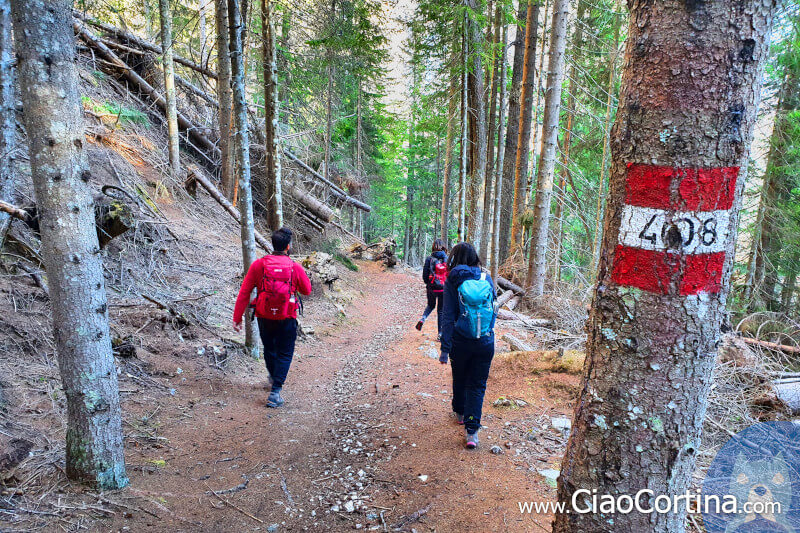

Use common sense
You should always remember that the mountain could potentially be dangerous. Some passages can be difficult, if you fall you could get very hurt. The phone does not always work, so you have to be much more careful than you normally would be, especially if you are alone. In this regard, remember to always tell someone where you are going and the route you will take.
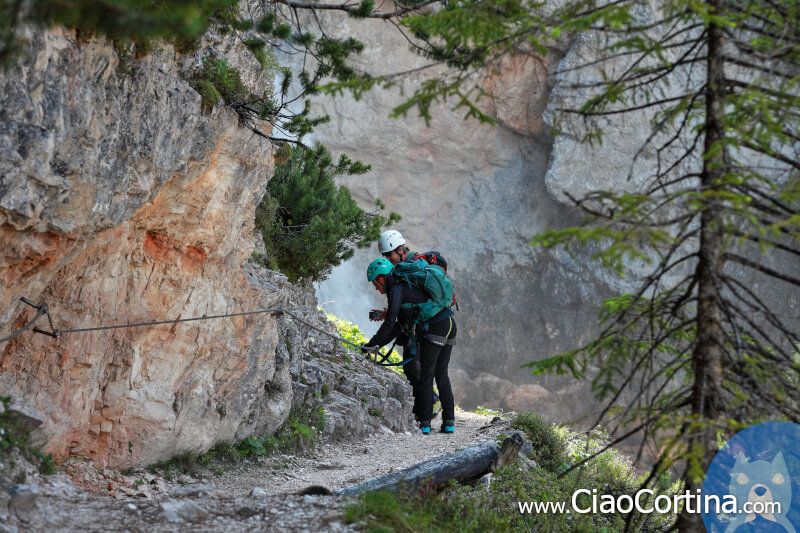
Before leaving you should always check the weather forecast, because it's extremely important to avoid difficult hikes in case of rain or bad weather. Always carry a rain jacket in your backpack, even if the forecast is good, but above all don't go on dangerous hikes or via ferrata if a storm seems to be approaching, even if the weather forecast did not foresee rain, it's too dangerous.
... Cortina's hikes are generally well marked...
The trails in Cortina are generally well marked. Usually, on the most touristic trails, the road signs are well placed, but if you find yourself in front of an unmarked intersection, it's often better to choose the most trampled path. If you're not sure which way is right, look for the red-white signs on trees or rocks. They are the safest way not to get lost. You can see a couple of them, painted on the trees, in the photos below.
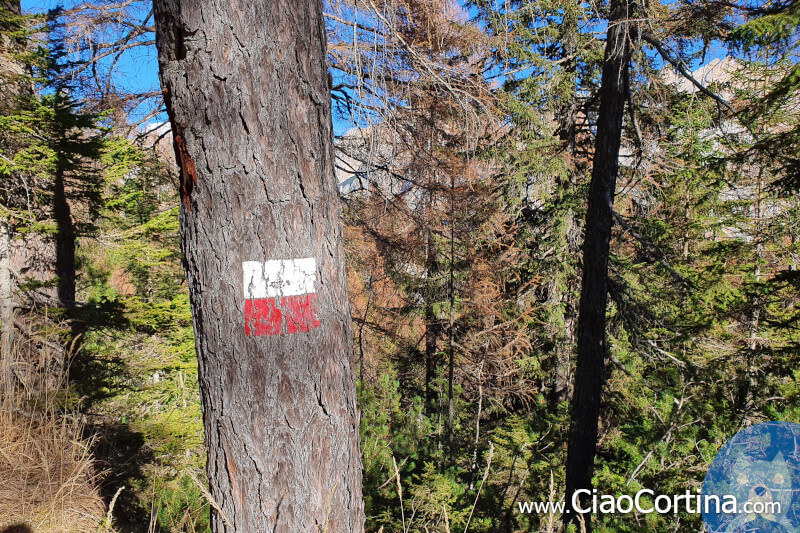
Needless to say that it is best to know which one to follow before leaving. If you don't want to take the busiest roads, or if you want to go on long walks, buy a paper map and carry it with you at all times.
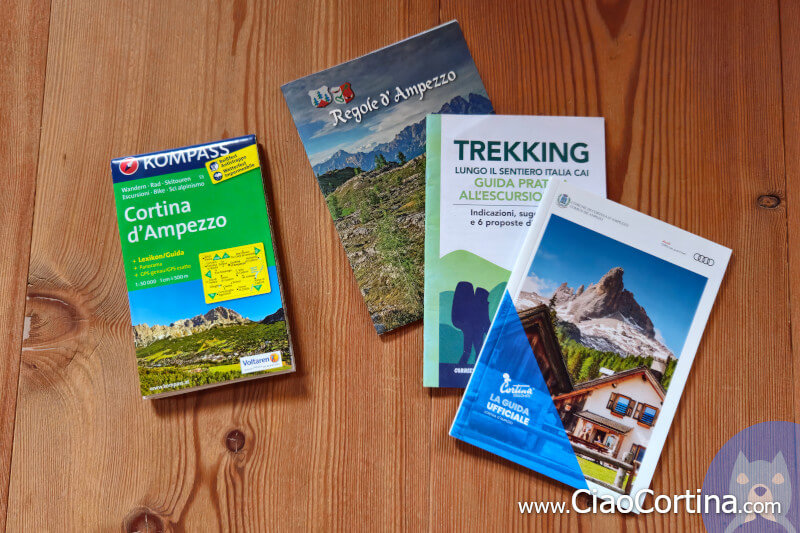
You should avoid all the places where you don't feel safe. All the hikes proposed on our website are rather easy so you should not worry, even if you have vertigo, but remember: everyone must be responsible for his body and his ability to handle fatigue or fear of height. If you are tired and you think you cannot continue, stop, eat something sweet, drink some water and, after a few minutes, decide whether to continue or to turn back.
If you want to tackle the mountain intensely, making your first climbs or via ferratas, remember to always contact a professional. In Cortina, the reference point for those who want to practice these sports is the office of the Alpine Guides.

Clothing
Clothing should be appropriate for hiking, with sturdy shoes and comfortable clothing, preferably technical. Never choose appearance over functionality. Try to dress in "onion" style, meaning stratified, so that you can add or remove a layer if you feel cold or heat.
A typical dress is: light and waterproof jacket, a fleece sweater and a technical t-shirt. For the pants a good idea are those convertible from long to short with a zipper. In midseason it is also advisable to take a cap and gloves. Remember that the temperatures in the mountains can change quickly, especially in the fall and spring, where it is easy to find colder or warmer than expected.
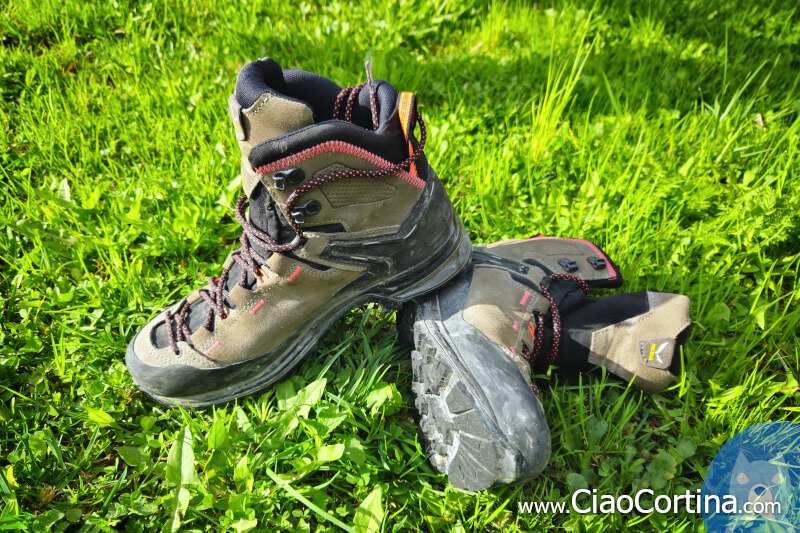
In the mountains there are ticks. We don't want to bore you with all the problems, potentially very serious, that a tick bite could bring. Remember that we are not at the beach: below 2,000 meters of altitude, or 6,500 feet, no one should dare to walk in the meadows in shorts and flat shoes, maybe without socks. You should always protect your legs with long pants or thick socks, using appropriate shoes. Alternatively, there are specific products, but nothing works better than good prevention.

The rucksack
Even if you are going on a short hike, we always recommend bringing with you a backpack with the necessary. The basic equipment consists of: a bottle of water, something sweet to eat, a rain jacket and a clean T-shirt, so you don't have to stay sweaty when you'll stop to relax.
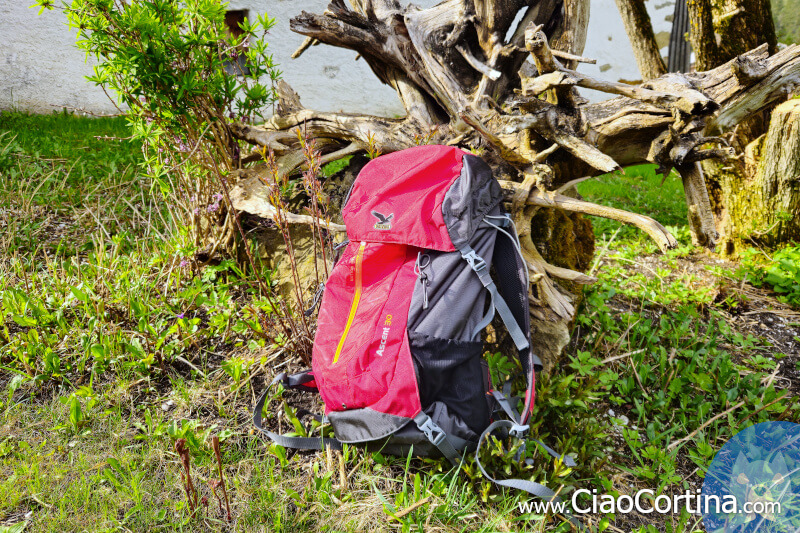
When you get to the top, whether it is to eat a sandwich or to eat something in a mountain lodge, it would be very unpleasant to keep a wet and sticky T-shirt soaked with sweat. Having a dry one will make a big difference, believe us. If you'd like more information about eating in a mountain lodge, you may want to read our page on this topic. You can find it below:

When planning a long hike, it's generally best to stay as light as possible, but that doesn't mean you should move on without the necessary. Below you will find a list of the minimum needed for a day hike, we recommend printing it out or taking a screenshot. Obviously this is a generic list, which should be expanded according to your needs. You should always prepare for the worst outcome.
- Plenty of Water
- Energy bars or dried fruit
- Sandwiches and fruit for lunch
- Dry T-shirt
- Dry pair of socks
- Waterproof jacket
- Hat
- Sunglasses
- Sunscreen lotion
- Paper tissues
- Paper map of the area
- Multipurpose knife
- Lighter
- Head flashlight with batteries
- Bandaids, gauzes and any medications
- Trekking poles, if necessary

Timing
You should always plan your hikes in the early morning hours. As all mountaineers can confirm, walking with the midday sun on your neck is never a good idea. Another thing to consider is that, by leaving early in the morning, it will be much easier to find parking and a place to eat at a mountain lodge. You'll also greatly reduce the risk of getting caught up in heat storms, brief thunderstorms that occur in the early afternoon hours of the hottest days.
Useful tips
Before we say goodbye, we want to give you a few more useful tips that might make your hike more enjoyable. Forgive us if some will seem obvious or uninteresting, but it's best to point out some concepts, even if they seem trivial.
... Hiking should be a relaxing activity, not a masochistic experience...
- Even if you're putting in a lot of effort, don't forget to stop sometimes, look at the view and enjoy nature. During the hike try to keep a steady pace, dictated by the slowest of the group, especially on the uphills. You should always try to relax, rather than expect to set a time record, or to force other family members or friends to keep up with your pace. The hike should be an enjoyable activity, not a masochistic "family ruiner" experience.
- If you have children or teens with you, consider that it is much harder for them to hike in the mountains. When walking on steep trails, consider that the obstacles are proportionate to their height, and therefore much more difficult to overcome. Be patient and choose a route suitable for your children. It's even better if it's a path already "tested," to avoid surprises.
- Try to stay hydrated all the time, but don't drink too much.
- If you see something crawling in the woods, most likely it will be an "orbettino," a legless lizard that is completely harmless to humans. In any case avoid approaching it, because in Cortina there are also two varieties of vipers that are rather poisonous, recognizable by their triangular head and by the hissing sound they emit when they feel in danger. No need to tell you to move away, your instincts will be enough.These kinds of encounters are rather uncommon anyway, because snakes are scared of our noises and the vibrations coming from our steps. For this reason, try to hit the ground hard with your feet, if you are walking in places with tall grass, to reduce the risks.
- Although common sense would say to keep to the edge of the path, to avoid being in the way of cyclists, there are exceptions. When the grass is high, staying in the center of the road avoids contact with ticks and offers better visibility for any animals..
- When you find cattle gates, it means that there may be cows grazing in that area. First of all, always close the gates, to prevent cattle from escaping; secondly, it is best not to get too close to the animals. Although they are peaceful creatures accustomed to people, they may react if disturbed.
- If during your walks, between the end of September and the beginning of November, you would hear a powerful sound in the woods, dark and very disturbing, it could be the call of the deer in heat. In this case, don't worry, just ignore it and move. If you are curious to hear what kind of noise it is here you can see a video on YouTube.
- If you go to the mountains alone, don't forget to tell someone your destination and the route you plan to take. The phone doesn't always receive a signal, so it's always a good idea to tell someone where you are, in case of a problem.
- If you have bought new equipment, especially shoes, use them on short tracks before using them for long rides, as foot ache is always lurking. If you feel discomfort, use a bandaid (you should have some in the backpack) and protect the irritated part.
- If you find berries or mushrooms that you are not absolutely sure you have identified correctly, avoid eating them. Although there are very few poisonous plants in the woods of the Dolomites, you may find yourself eating ranunculus or some form of amanita, that could cause a bad stomach ache and, in the worst case scenario, intoxication.
- If, during your hikes, you are approached by wild animals that are not particularly intimidated, try to prevent them from getting too close. Although rabies is quite rare in Europe, you may be dealing with animals that carry the disease. This is especially true for animals that appear nervous and with excessive and foamy salivation.
- Along the paths you may find some anthills, a few may be pretty big. Don't worry, the wood ants are a very tame insect, which does not sting humans. You must avoid stepping on them, leaving them intact, they are very delicate structures and they are also protected by law, damaging them is not only immoral, but also illegal.

Respect the mountain
The mountain has to be treated with respect, you have to be careful not to damage the environment and you must always bring home your own garbage. It would be amazing if you would contribute to cleaning the forest, collecting any garbage left by less respectful guests.
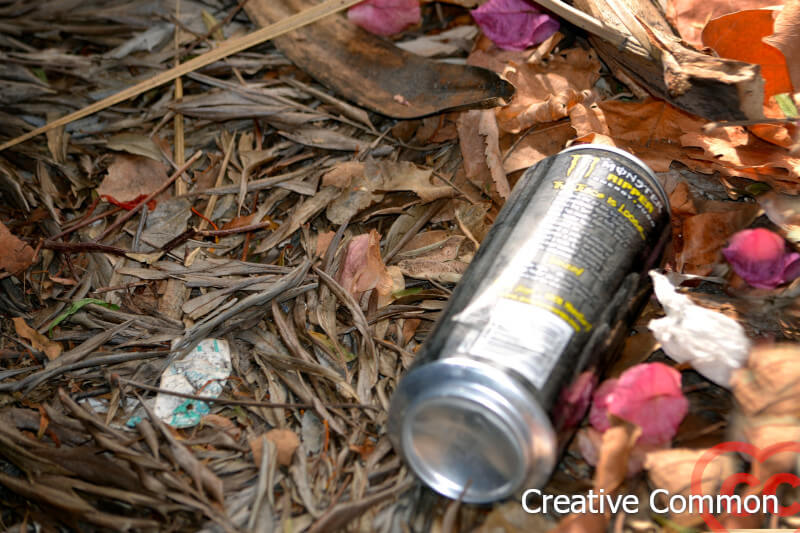
It would also be better to avoid making noise, as much as possible, to have a chance to see wild animals, such as squirrels or deer, who would otherwise run away, frightened by your chaos. If you would like more information about animals living in Cortina, you may want to read our page.
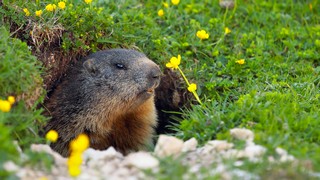

Conclusion
We hope you liked our tips for novice hikers. Before saying goodbye, we would suggest you read our home page, with all the articles we wrote about Cortina d'Ampezzo.
If you want to thank us you can read the page Support us. If you only want to suggest a change, propose something or just say hello, in the section contacts and info, you'll find all the ways to reach us.